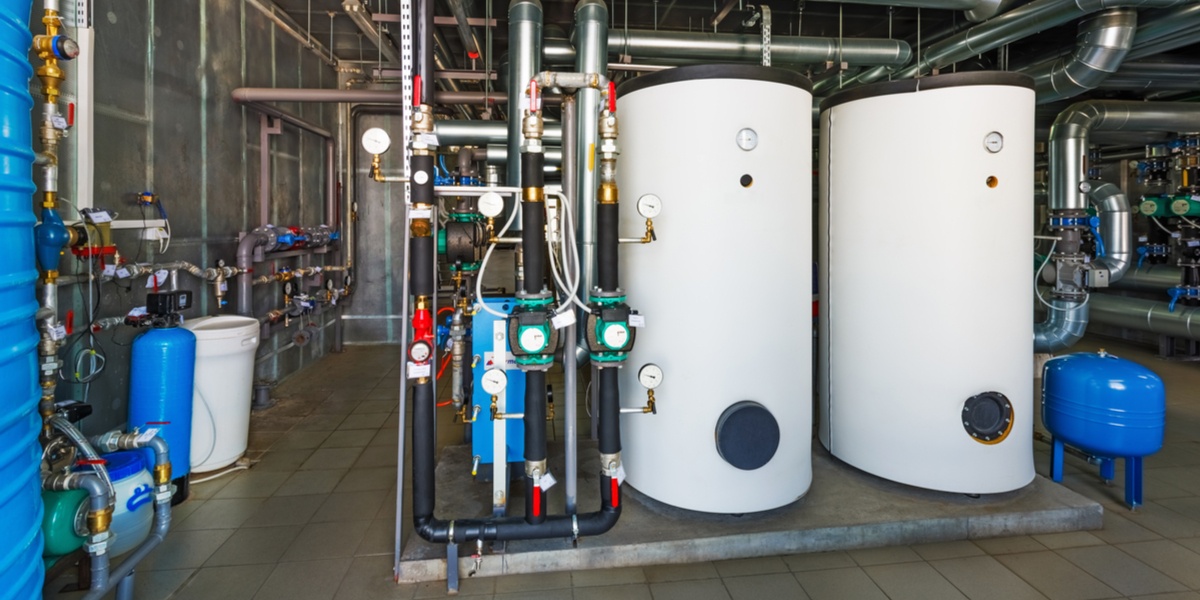Upgrading Gas-Fired HVAC Equipment in New Jersey: Commercial and Industrial Buildings

We previously discussed the incentives available in New Jersey for electrical HVAC upgrades in commercial and industrial buildings. These are available through the NJ Clean Energy Program, specifically through a subprogram called SmartStart Buildings. However, many gas-fired equipment upgrades are also covered by rebates, where the common denominator is reducing energy costs and carbon emissions.
This article will focus on the benefits available for gas-fired equipment. Combustion is often used for space heating and domestic hot water, since electric heating is very expensive unless you use high-efficiency heat pumps.
SmartStart targets both new constructions and existing buildings, and you can get the rebates by specifying qualified equipment in either case. Calculation worksheets are provided for each type of upgrade in the NJCEP website.
Make sure your gas-fired equipment is eligible for rebates.
Gas Cooling
Although natural gas is normally used as a heat source, there are two types of systems that can deliver cooling with a heat input: absorption chillers and regenerative desiccant units. These are very cost-effective when you have plenty of waste heat from another process, since you can reduce the load on electrical cooling systems. Of course, absorption chillers can also be fired directly with gas.
The incentive rate for absorption chillers is specified in USD/ton, and it ranges from $185/ton to $450/ton depending on chiller capacity. Both direct-fired and indirect-fired chillers are eligible for the incentive, the only difference is that worksheet measure codes change for each case. In addition, the following requirements apply:
- The chiller must have a full-load coefficient of performance above 1.1, calculated according to the AHRI Standard 550/590/2003
- If capacity exceeds 400 tons, only two-stage chillers qualify.
Regenerative desiccant units get a single incentive rate of $1.00 per CFM or air. They are eligible for the incentive when coupled with gas-fired or electric equipment - the applicant must submit documentation to prove compatibility.
Gas Heating
The SmartStart Buildings program provides incentives for the following upgrades targeting gas-fired space heating equipment: high efficiency gas boilers, high efficiency gas furnaces, low intensity infrared heaters and economizing controls
The incentive for high-efficiency gas boilers is calculated in USD per MBH of capacity, and the rate is determined based on the following characteristics:
- Boiler capacity: divided into ranges, with a difference incentive rate for each range. Boilers above 4,000 MBH are not covered and must be submitted for approval as custom energy efficiency measures.
- Type: non-condensing or condensing.
- Heat transport medium: hot water, natural draft steam, and other steam systems.
- There is a minimum efficiency level, which changes depending on the combination of the three factors above (capacity, type, heat transport medium).
High-efficiency gas furnaces get a single incentive of $400 per unit. It applies regardless of type as long as the following conditions are met:
- Equipment that is listed as an ENERGY STAR Certified furnace.
- A minimum Annual Fuel Utilization Efficiency (AFUE) of 95%.
Low intensity infrared heaters get an incentive of $500/unit for capacity up to 100 MBH, and $300/unit for units exceeding 100 MBH. The benefit only applies if the heater is used indoors, and only for boilers listed by UL or another Nationally Recognized Testing Laboratory (NRTL) approved by OSHA.
In the case of boiler economizer controls, the incentive is per system and calculated based on boiler capacity, ranging from $1200 to $2700. Like in the case of infrared heaters, only controls listed by UL or an OSHA-approved laboratory are eligible. The benefit applies for both new and existing boilers, but only if they are not currently equipped with an economizer control.
Gas Water Heating
The SmartStart Buildings program provides incentives for both tank-style and tankless water heaters, but this benefit is exclusive for the replacement of existing units. The incentive rate is specified in USD/MBH, and it is determined based on capacity (MBH) and efficiency.
- Storage water heaters get an incentive of $1.75/MBH if they meet the minimum efficiency requirement, but there is a higher efficiency tier where the incentive rate increases to $3.50/MBH. The efficiency levels required for each tier change depending on equipment capacity (MBH)
- Tankless water heaters get an incentive of $300/unit. However, efficiency requirements change for units below 200 MBH and for larger units.
Conclusion
Space heating and domestic hot water represent a significant portion of energy expenses in northeastern states like New Jersey. The carbon footprint of these building systems is also high, since they typically rely on oil or gas combustion. The NJ Clean Energy Program provides incentives for high-efficiency gas equipment, since gas is the less polluting of the two most common fuels.
If you are considering an upgrade for gas-fired equipment in a commercial or industrial building, get in touch with a qualified design firm. This way, you ensure that SmartStart incentive requirements are met.

Anuj Srivastava
Anuj Srivastava is a principal partner at NY Engineers. He is known for his MEP franchise market knowledge. Anuj is currently leading a team of 100+ MEP/FP engineers and has successfully led over 1500 franchise projects in the US.
Join 15,000+ Fellow Architects and Contractors
Get expert engineering tips straight to your inbox. Subscribe to the NY Engineers Blog below.



